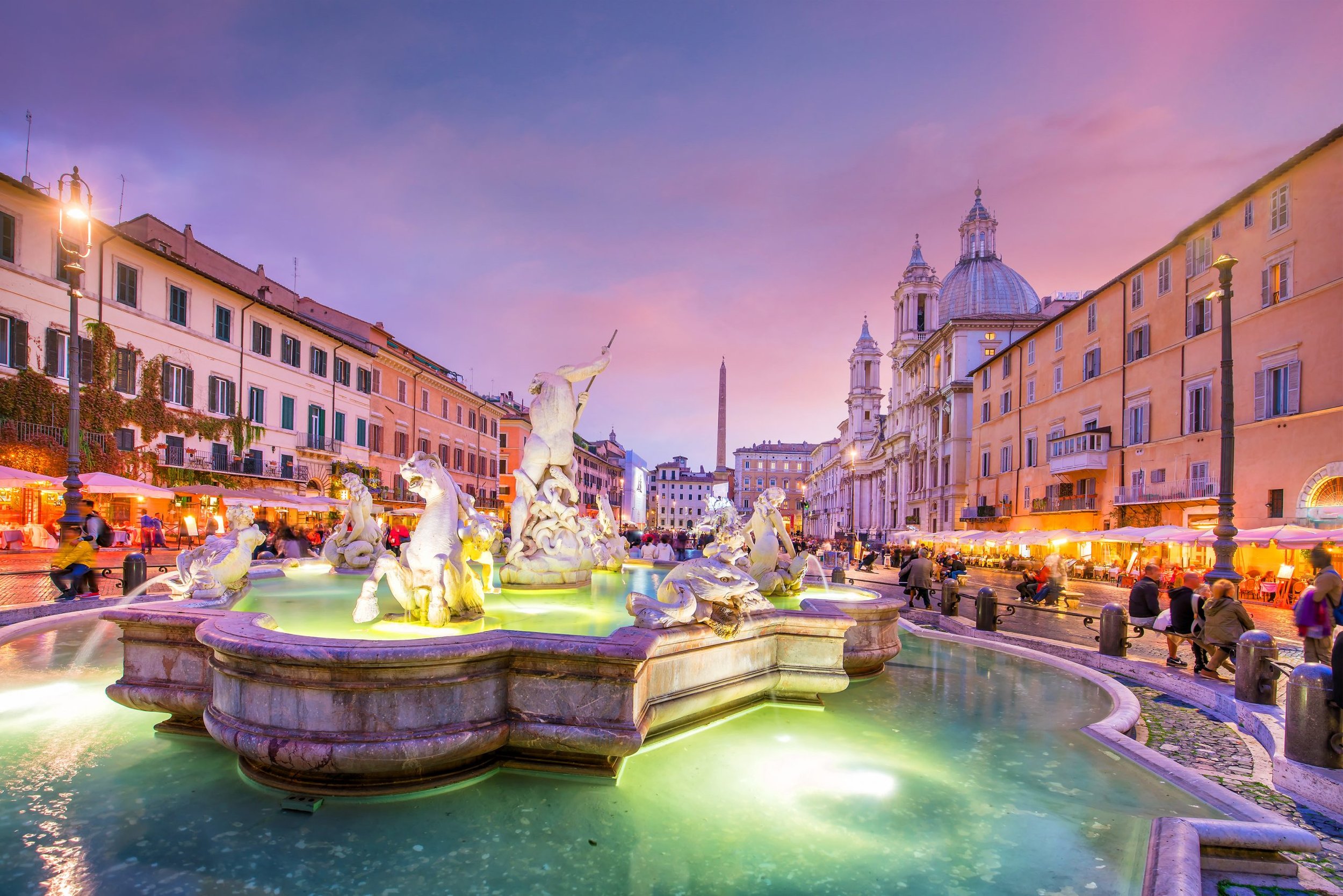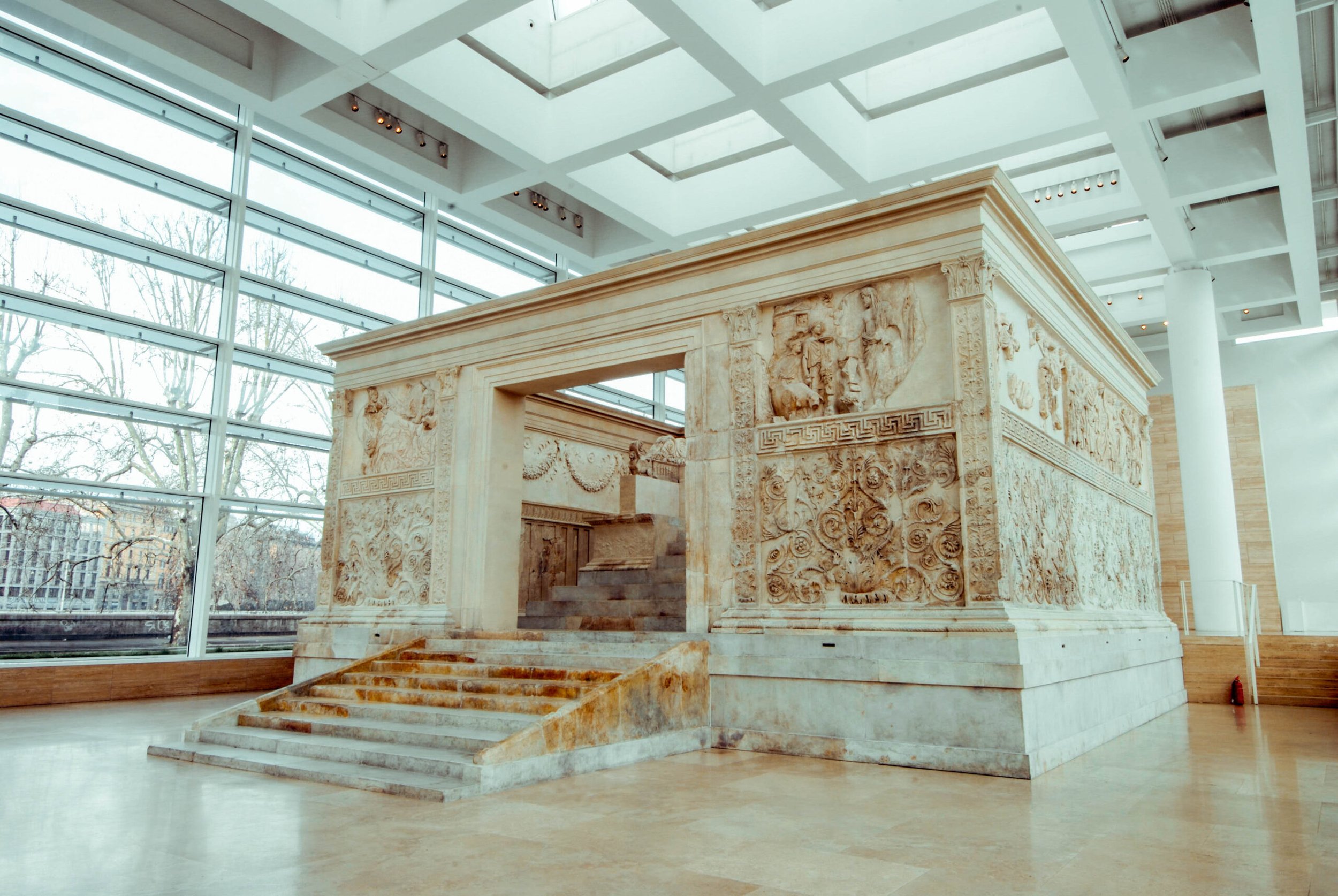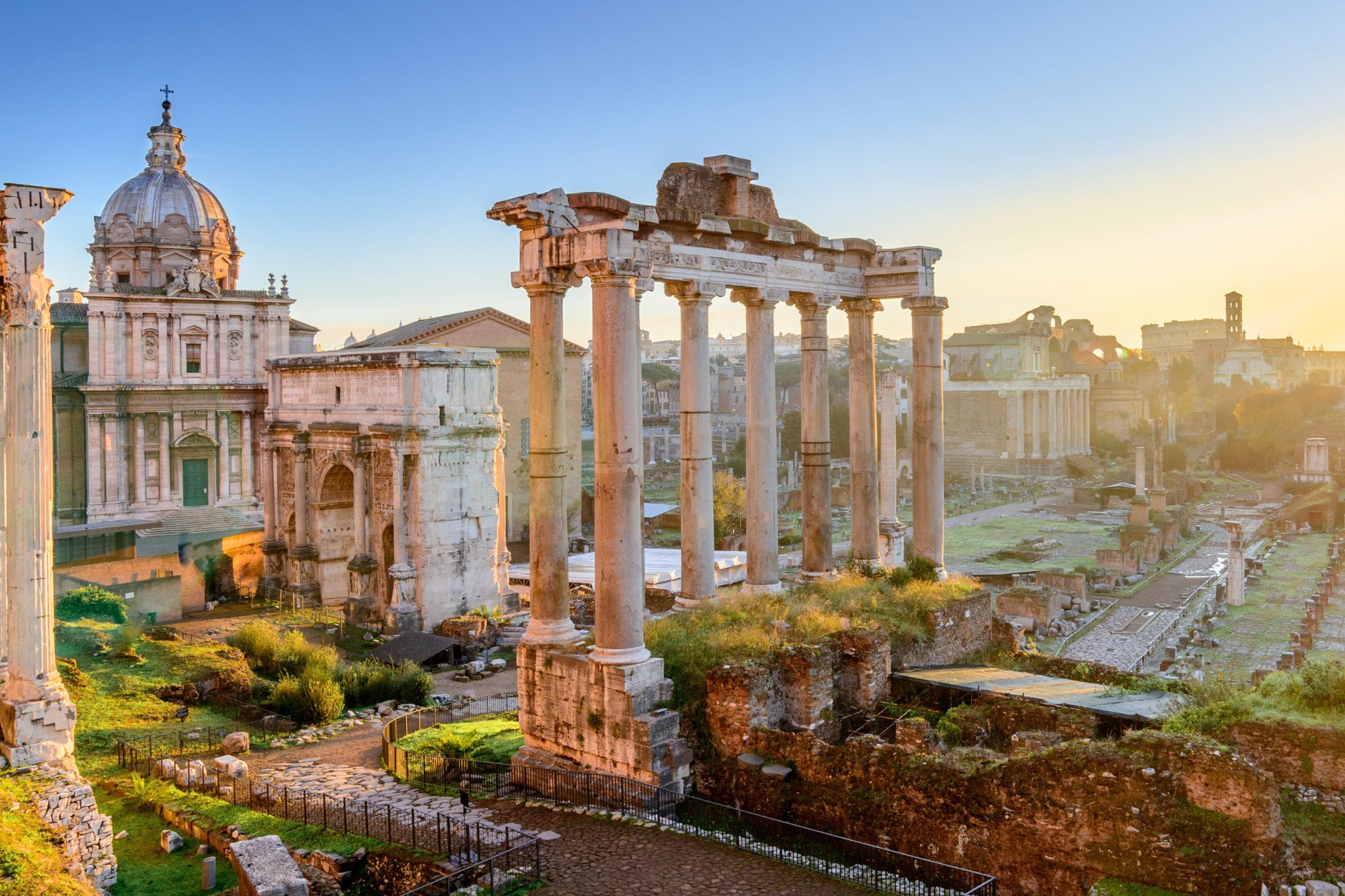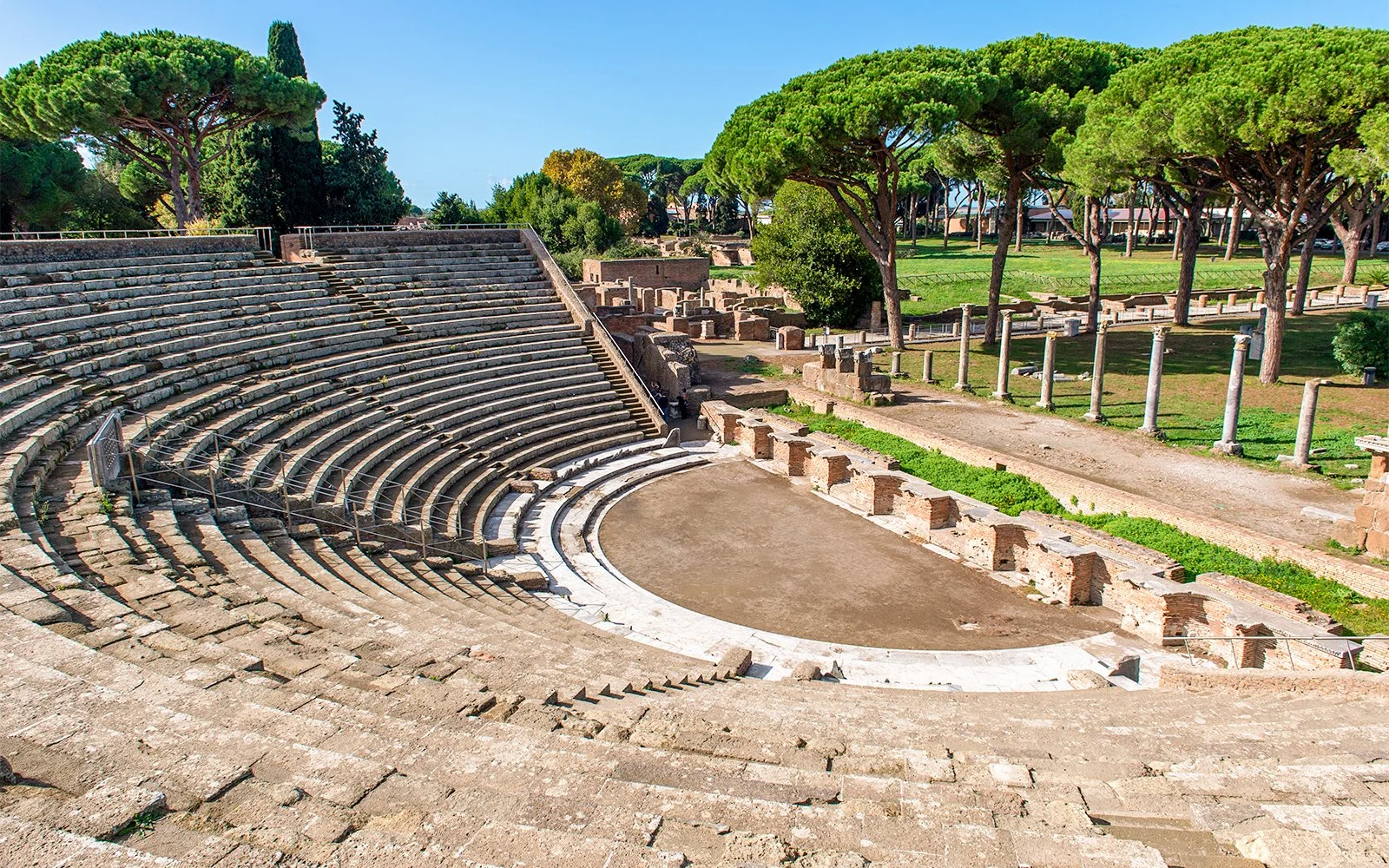ARCHEOLOGICAL SITES
Fascinating archaeological sites filled with incredibly rich history.








-

Archeological Park Colosseo
The Colosseum Archaeological Park is not only an archaeological site but also a large green area that extends for more than 40 hectares, considering only the territory of the Roman Forum and Palatine Hill, in the heart of the city of Rome. A "natural park" in which the spontaneous vegetation, typical of the Mediterranean area, coexists with the large trees planted in recent centuries, in order to revive the spirit of the imperial gardens and the Renaissance Horti Farnesiani which, in successive phases, have embellished the top of the ancient hill. This green area has been chosen as a habitat by a large fauna of small mammals, reptiles, insects, and birds.
-

Ara Pacis and the Teca of Meier
In the period between 1996 and 2006, the museum was redesigned by the American architect Richard Meier, and the old pavilion which had been built by architect Morpurgo (1938) was replaced. The museum is characterized by large windows alternated with blocks of travertine. The structure was commissioned in 13 BC to commemorate Augustus’s return from the provinces of Gaul. The altar was dedicated to emperor Augustus on January 30, 9 B.C.. Emperor Augustus wanted it to be built in the Campus Martius near his Mausoleum and the Horologium Augusti, the largest sundial in the ancient world made with a large Egyptian obelisk in red granite. The shadow of the sundial is said to have reached the main door of the Ara Pacis on September 23, the emperor's natal day. The altar’s decorative elements are based on mythological and historical themes. They feature a perfect combination of the classical style, used to depict the historical scenes, and the Hellenistic style.
-

Campidoglio
The Capitoline Hill was the heart of the Roman Empire and it is still the most important hill in Rome. From the top of the hill, you can see the valley of the Tiber to the west, the Campus Martius to the north, and the valley of the Roman Forum to the south. The geographical position of Capitoline hill made it an important site for the pre-urban communities of the area. The hill is still the political seat of the city: on its top, there are currently the representative rooms of the municipality of Rome, the offices of the Mayor, the council chamber, and other public spaces.
-

Domus Aurea
The monumental villa of emperor Nerone spread over an area between the hills of the Palatine, Velia, Esquiline, and Caelian. It was built at the behest of the emperor, following the fire of Rome in 64 A.D., which had caused the destruction of the Domus Transitoria, also wanted by the emperor himself and built between 54 and 64 A.D. to connect the Palatine and the Esquiline. Little remains of the original complex because of the major changes made by other emperors after the death of Nero. One of the main innovative features of the residence was its architectural design which created the illusion/a feeling of grandeur, reflecting Nero's "Baroque" taste. The decorations of the villa are very rich and consist of stuccoes, paintings, and marble coverings. In the central part of the structure, there was the famous room with a golden vault which was richly decorated.
-

Foro of Traiano
The last and the most grandiose of the Imperial Fora was the Forum of Trajan. A total of about 300,000 cubic metres of tufaceous material were removed from the Quirinal hill to make space for the area of about 4.2 hectares where the Forum stands. The Forum was probably intended to serve as a place for the administration of justice. However, it was also built to celebrate the emperor's victory over the Dacians. In the past, some of the functions of the Roman Forum had already been moved to the Forum of Caesar and the Forum of Augustus.
-

Foro Romano
The monumental area of the Roman Forum, together with the Colosseum and the Palatine Hill, is part of the largest archaeological parks in the world and represents the heart of ancient Roman life. The Forum was the center of public life in ancient Rome. In protohistoric times, there was a necropolis in the area, which was moved to the Esquiline and Quirinal hills at the end of the ninth century BC. The Forum was built in the area as part of a proto-urban settlement. The Roman Forum developed gradually over time and it underwent many transformations. The last transformation involved the conversion of numerous pagan temples into Christian places of worship and the construction of new churches, such as the Church of Saints Cosmas and Damian, the Church of St. Hadrian, and the Church of Santa Maria Antiqua.
-

Palazzo Massimo
It is located near Termini station, where it was built between 1883 and 1887 by Camillo Pistrucci at the behest of Massimiliano Massimo, an Italian Jesuit priest and educator. Transformed into a museum in 1998, it houses a large numismatic collection and a section entirely dedicated to ancient art. Palazzo Massimo also offers an overview of Roman artistic production between the late Republican age and the last phase of the empire. It also has works from the Greek world that where brought to Rome.
-

Piazza Navona
In the heart of the Campo Marzio, the area of Rome which in ancient times was dedicated to the god Mars, there is one of the most evocative squares of the city. In the square, there are masterpieces that have left a mark on the history of architecture, such as the Fountain of the Four Rivers and the Church of Sant'Agnese in Agone. Most of the monuments in the square date back to the sixteenth and the seventeenth centuries and walking there is like taking a step back in time and being transported to the period when the Baroque style flourished in Rome. In the mid-1500s Gregory XIII Boncompagni ordered the construction of multiple fountains and drinking troughs and, in 1575, the Fountain of the Moor and the Fountain of Neptune were built. Their polylobate basins were designed by Giacomo della Porta, but they underwent numerous renovations over the centuries. In 1653, the restoration of the Fountain of the Moor was commissioned to Gian Lorenzo Bernini by Pope Innocent X Pamphilj; the Pope had had a palace built in the square and wanted to admire the fountain from its windows.
-

Portico di Ottavia and the Jewish Ghetto
The Portico d’Ottavia complex, located where there once was the Jewish ghetto, served as a sacred area, a treasure trove of art, and a fish market at different times throughout history. Many tales make the evocative vestiges of the Portico d'Ottavia even more fascinating. The original structure had a quadrangular layout bordered on all four sides by large porticoes. It had a single nave on the main sides and a double nave on the secondary ones. Inside the complex there was a temple dedicated to Juno Regina, which featured columns on the front and whose sacellum was bordered by masonry walls; and another temple dedicated to Jupiter Stator, which was a classic example of Greek periptera, flanked by tall columns on each side. Starting from the year 1555, the Portico d'Ottavia complex was incorporated into what was called the Claustro of the Jews and it ended up becoming one of its symbols. Walking through the vestiges of this ancient portico, one can willingly abandon the chaos of the city and enjoy the atmosphere of the everyday life of a place filled with small family-run shops.
-

Stadium of Domiziano
All that remains of this monument, which has been replaced by Piazza Navona, is its elongated rectangular shape characterized by a curvilinear north side. In 86 A.D. the Certamen Capitolinum was established, a competition in honor of Jupiter every four years, and for the athletic games held in honor of this occasion the building erected at the behest of Domitian a few years earlier was chosen. Since it is a stadium and not a circus, it was not equipped with a central spine and an obelisk like the Circus Maximus. The obelisk which currently stands in the center of Piazza Navona was not part of the stadium in ancient times.
-

Temple of Peace
The monumental complex known as the Temple of Peace was built by order of Emperor Vespasian in the period between 71 and 75 A.D. to celebrate his victory against the Jews. The complex became one of the five Imperial Fora. The area, which is still an excavation site, can be seen from Via dei Fori Imperiali. In 192 A.D. a raging fire damaged the Temple and restoration works were carried out under the reign of Septimius Severus. In the complex, there were many buildings including two libraries and a public museum that housed numerous works of art, including the paintings and sculptures that had been in Nero's Domus Aurea: the groups of Galatians from Pergamon, the statues of Phidias and Polycletus, the paintings of Protogenes and Nicomachus The works of art that had been looted from the Temple of Jerusalem, such as the seven-branched candelabrum depicted in the Arch of Titus, were also kept in the Forum of Peace.
-

Temple of Saturno
The great Ionic building, which stands at the foot of the Capitol, is certainly identifiable with the Temple of Saturn. It was originally preceded by an altar, connected to the mythical foundation of the town on the Capitoline Hill by the god of regeneration and abundance. It is the oldest temple in the Roman Forum, second only to that of the Capitoline Triad in the entire city. Eight Ionic columns, in grey granite, and the main pediment, attributable to the post-283 AD phase, largely built with recycled material, remain in the temple.
-

Testaccio
The Testaccio district is currently experiencing a rebirth as an educational and cultural center. It is located in a privileged area close to the historic center of Rome and it is one of the few districts that has been able to preserve its authenticity, despite undergoing urban redevelopment. During the Roman expansion of the second century B.C., the district underwent major urban redevelopment and a new river port and large warehouses for the storage of goods were built there. Together with other particularly important commercial areas, such as the Forum Boarium and the Olitorium, Testaccio played a fundamental role in the economic growth of ancient Rome.
-

Trastevere
In ancient times it was a district outside the real Rome, which underwent a demographic and consequently urban explosion starting from the late Republican age. Thanks to its particular position in the vicinity of the urban port, it began intense productive and market activity, favoring the development of an immense residential district, which in the imperial age reached levels unknown to other urban regiones. The hills and slopes near the river were occupied by important high-ranking villas, including that of the Farnesina .
-

Archeological Park of Ostia Antica
The Parco Archeologico of Ostia Antica is one of the largest archeological sites of ancient Rome. The colony was founded between the end of the fifth century and the beginning of the fourth century BC as a ‘castrum’, a rectangular fortified citadel. Initially, it served as a naval base under the control of a Roman quaestor, and then from the second century, because of its increasing importance for trade and for the food supply of Rome, it began to expand. The first excavations of Ostia were undertaken under Pope Pius VII at the beginning of the nineteenth century, continued under Pius IX, and after the Unification continuous research, carried out in view of the Universal Exhibition of 1942, brought to light an area of 34 hectares against the 50 hectares that were probably built in ancient times.
